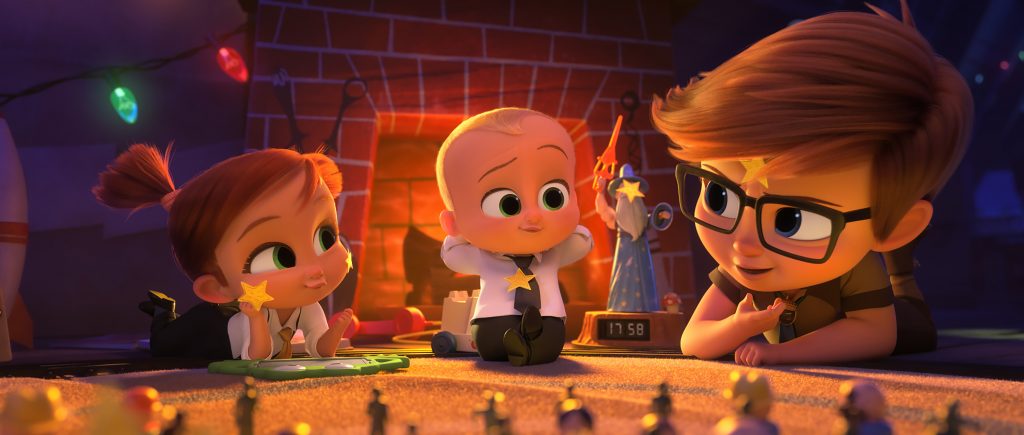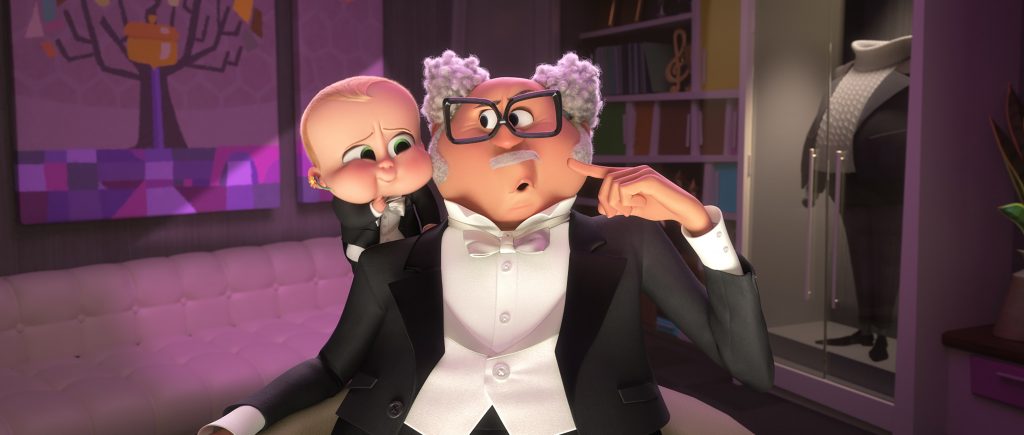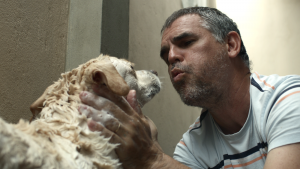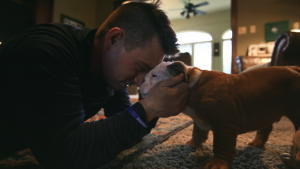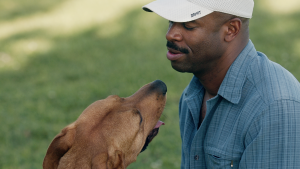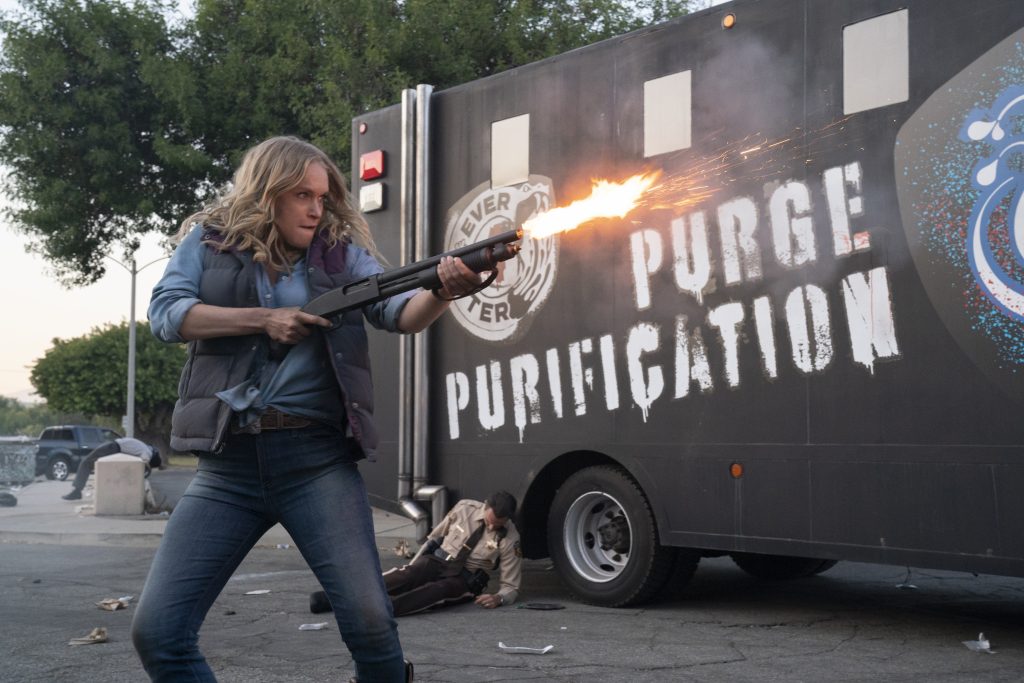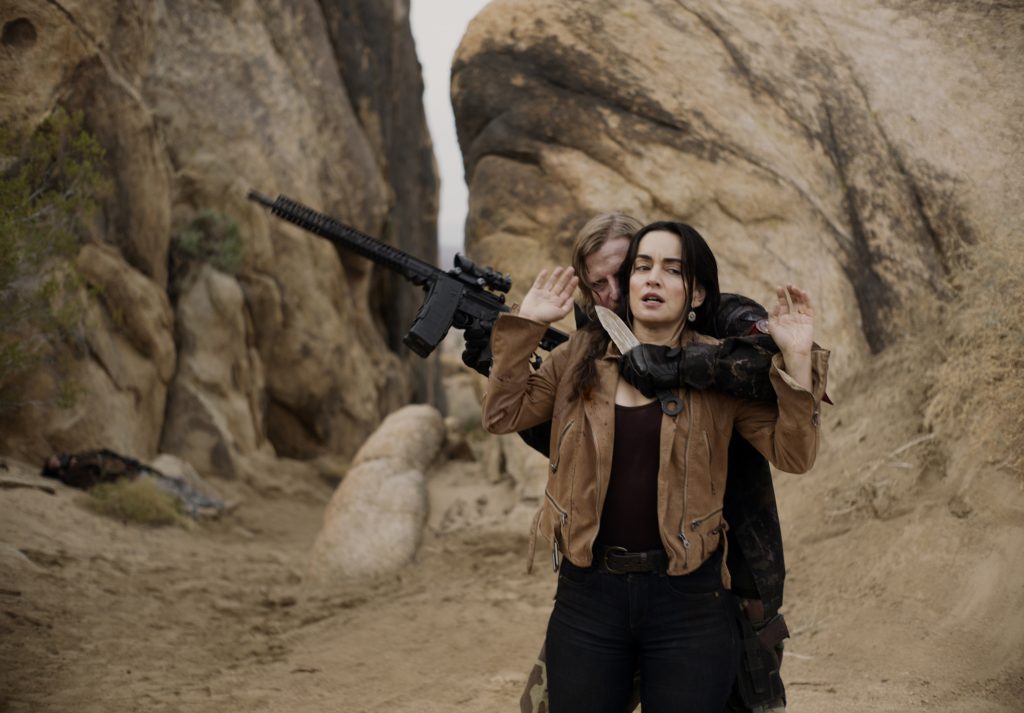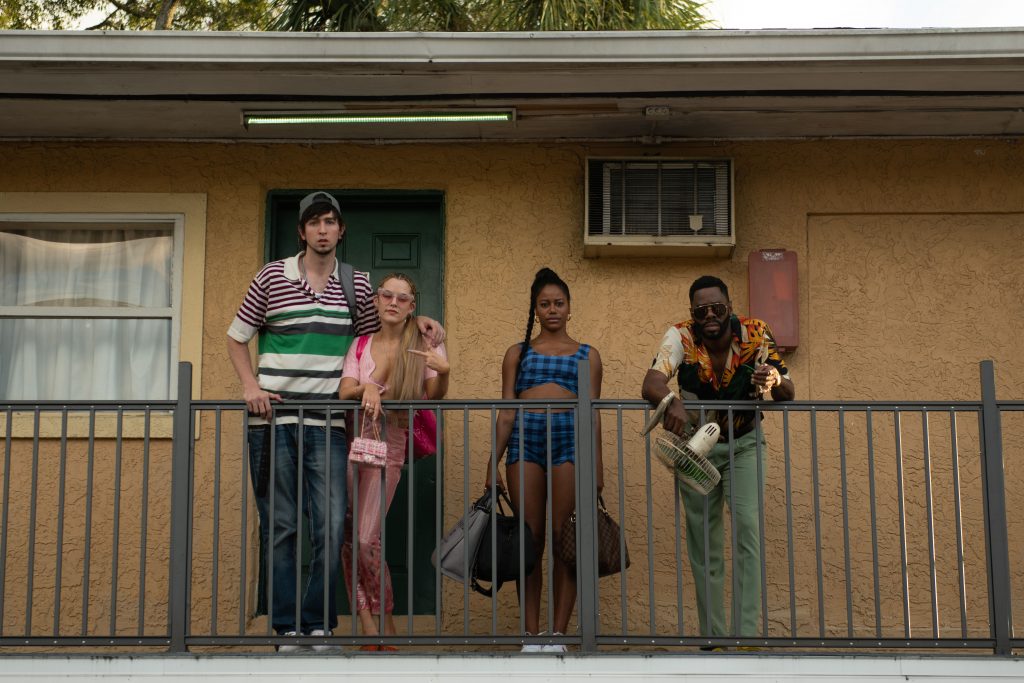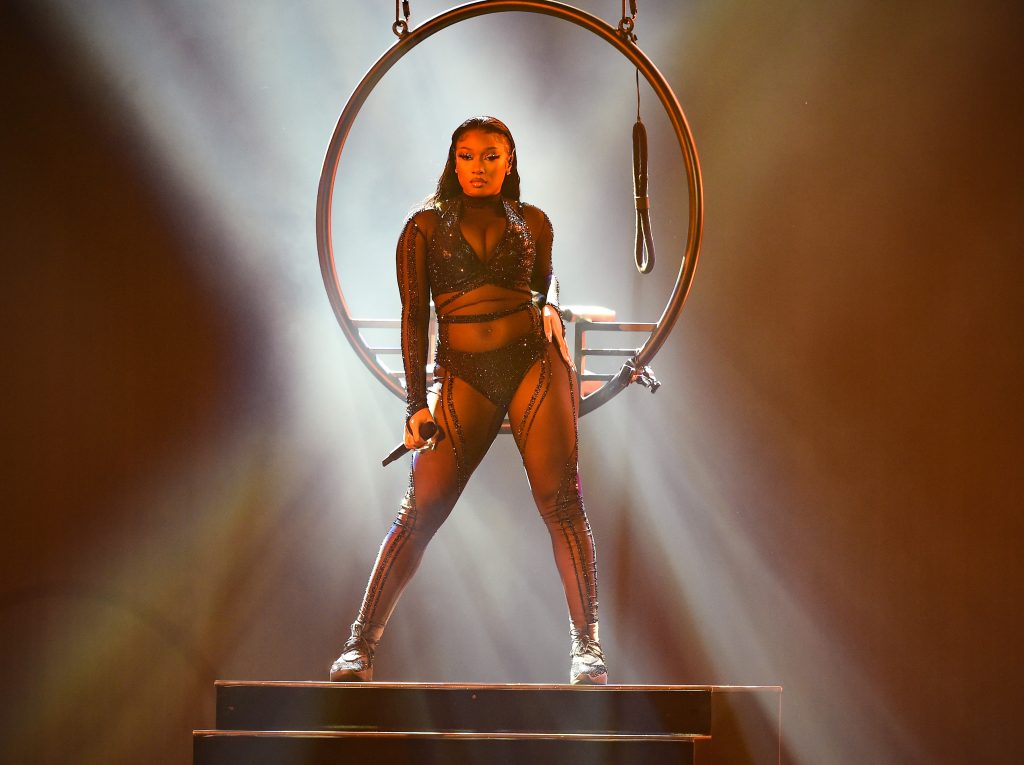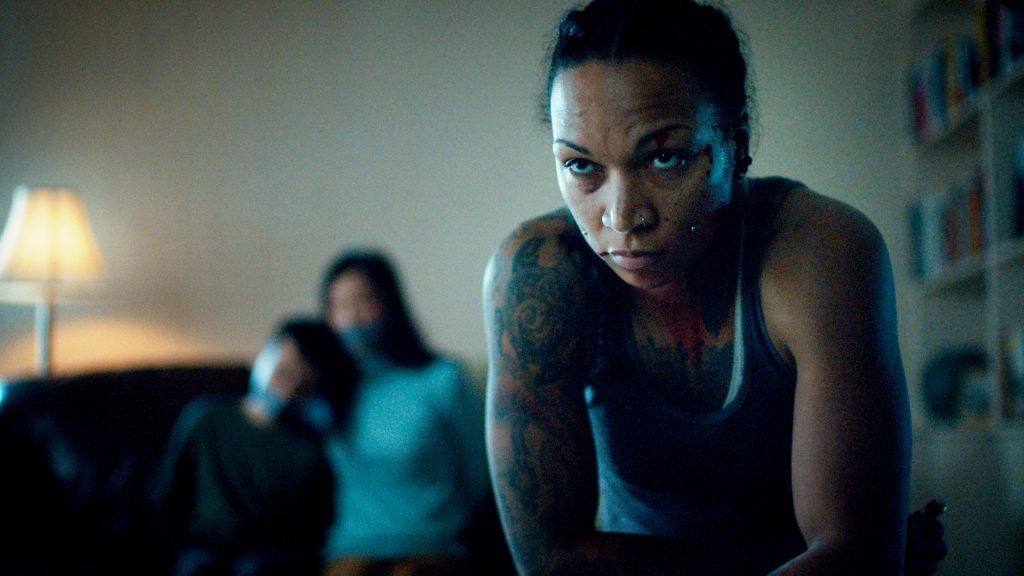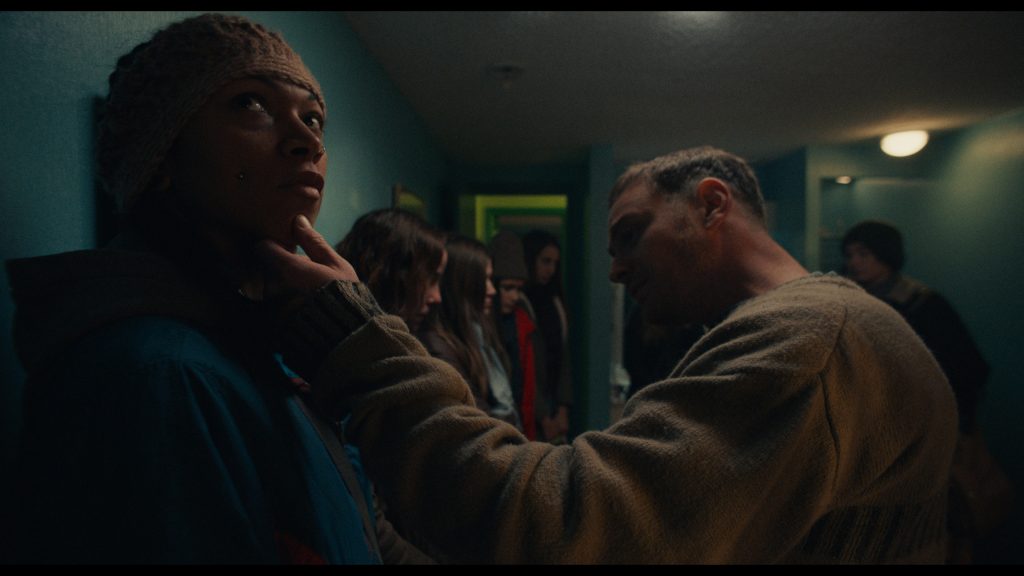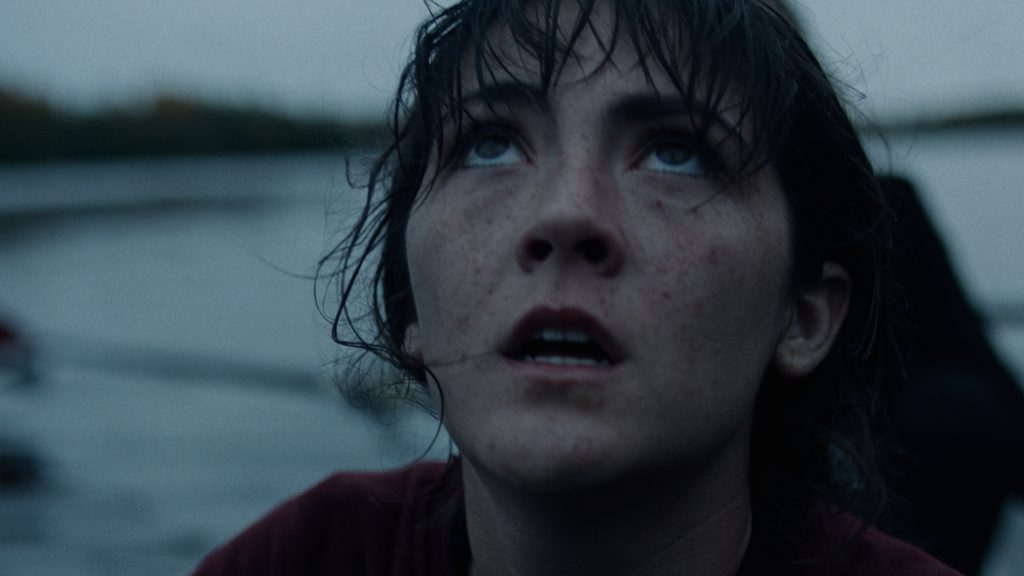July 2, 2021
by Carla Hay

Directed by Edgar Wright
Culture Representation: The documentary film “The Sparks Brothers” features a nearly all-white group of people (and one African American) discussing the career and influence of the American experimental rock/pop duo Sparks, including Sparks members Russell Mael and Ron Mael.
Culture Clash: The highs and lows of Sparks’ career included the Mael brothers’ sibling rivalry; relocating to England during a pivotal time in the duo’s career; parting ways with filmmaker Tim Burton on a movie musical that was supposed to be a big comeback for Sparks; and dealing with the fickle nature of the music business.
Culture Audience: Aside from die-hard fans of Sparks, “The Sparks Brothers” will appeal mostly to people who are nostalgic or curious about influential pop/rock musicians who never became superstars.
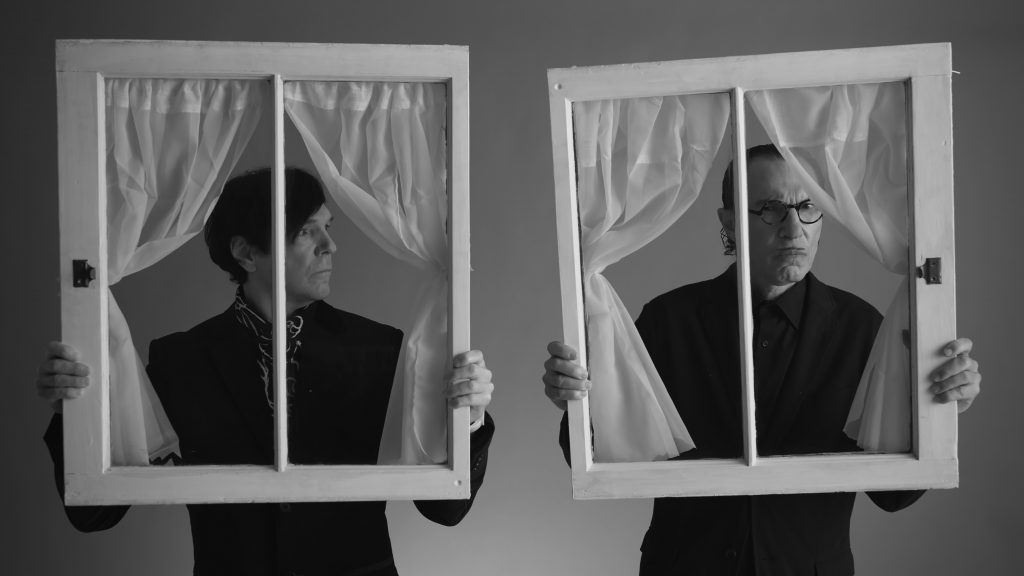
“The Sparks Brothers” documentary director Edgar Wright makes it abundantly clear that he’s a massive fan of the pop/rock duo Sparks, so this film is more of a tribute than a well-rounded biography. At 140 minutes long, “The Sparks Brothers” can be an endurance test for people who aren’t die-hard Sparks enthusiasts. And since the documentary only interviews people who are either fans of Sparks or have worked with Sparks, the non-stop praise for Sparks can be a bit repetitive. However, the documentary is a fascinating look at the longevity of Sparks and the brotherly dynamics of Sparks members Ron and Russell Mael.
“The Sparks Brothers,” whose exclusive interview footage was filmed in black and white, is a documentary that makes some attempt to not completely follow the typical film biography format of mixing archival footage with new footage that was filmed exclusively for the documentary. Sparks is known as an experimental and offbeat act that never hit superstar mainstream status. And so, there are moments in the film that are nods to the quirky image of Sparks.
For example, director Wright can sometimes be heard talking to the Mael brothers off-camera in a cheeky manner to make a joke or set up a sight gag. When he asks the Ron and Russell why they decided to do an authorized documentary at this time in their lives, older brother Ron says, “We didn’t want to do a standard documentary full of talking heads.” Russell adds, “It would become too dry.” And then two buckets of water are thrown on the brothers.
It’s a facetious moment, because this documentary is actually full of talking heads—so much so that numerous people’s comments about Sparks take up at least 40% of the movie. Some of the best moments of the documentary, which tells the Sparks story in chronological order, is near the beginning, when it reveals photos and details about the early years of Ron and Russell being musicians.
Ron (who was born in 1945 in Santa Monica, California) and Russell Mael (who was born in 1948 in Culver City, California) are the only children of Meyer and Miriam Mael. Meyer was a commercial painter, graphic designer and caricaturist, who tragically died when Ron was 11 and Russell was 8. Miriam was a librarian. Ron and Russell were raised primarily in Pacific Palisades (an affluent suburb of Los Angeles), and the brothers performed in talent shows when they were school children.
Ron says that these talent shows were the first experiences that he and Russell had in getting a taste of the “addicting” thrill of affecting an audience. People unfamiliar with the Mael brothers’ teen years might be surprised to find out from this documentary that Russell (who’s known for his thin physique) was the quarterback of his high school football team. Russell says that he got the same adrenaline rush from playing in football games that he later got when he performed on stage as an entertainer. The Mael brothers say that the 1955 dramatic film “Blackboard Jungle” was a huge influence on them as children.
Ron and Russell attended the University of California at Los Angeles (UCLA), where they started to play in rock bands that never really went anywhere beyond the local music scene. Two of those bands were Moonbaker Abbey and the Urban Renewal Projects. The Mael brothers say they first started getting serious about music when they began working with Earle Mankey, a founding member of Halfnelson, the band whose name was later changed to Sparks. Sparks’ 1971 eponymous debut album was originally titled “Halfnelson.” Mankey is one of the people interviewed in the documentary.
At UCLA, Ron and Russell both studied film, which would influence the types of music videos that they made and their tendency to sometimes reinvent themselves with various images and costumes. But throughout their career, one image of the band remained true and constant: Russell as the extroverted lead singer (who was also a heartthrob in Sparks’ heyday) and Ron as the introverted keyboardist/songwriter/producer.
It’s repeated several times in the documentary that Ron had private struggles with being overshadowed by Russell, even though Ron was the one creating the band’s songs. It’s a common situation with musical duos and groups, because the lead singer is usually the one who gets most of the attention. But adding in sibling rivalry makes it a more emotionally complicated issue. Someone can stop working with a sibling, but that sibling will still be a family member.
Russell describes the early years of developing his stage persona as trying to emulate Rolling Stones lead singer Mick Jagger and The Who lead singer Roger Daltrey. “I was off by a few thousand miles,” he quips. The Mael brothers say other musical influences on Sparks were French New Wave bands. Given the brothers’ background in studying film, it’s not surprising that French New Wave in music and film had an effect on them, because there’s a very European style to the Mael brothers’ art.
Becoming a superstar act was never Sparks’ goal, but this documentary makes it clear that Ron and Russell Mael have wanted enough commercial success to be famous and to be wealthy enough to able to self-fund their projects in case no companies or investors were interested. There’s no question that Sparks has a very devoted fan base, but this documentary wants to bestow “legendary” status on Sparks. It’s a description that gives the movie a very fan-worship tone that exaggerates how far Sparks’ influence really went, compared to other non-mainstream arists who influenced a wider variety of people.
“The Sparks Brothers” documentary gives a comprehensive overview of the Sparks album discography, up until 2020, when the movie was completed. There’s a mention at the end of the film about the 2021 movie musical “Annette” (directed by Leos Carax), which features original music by Sparks, as well as the Mael brothers in supporting roles as actors. “Annette” (which stars Adam Driver and Marion Cotillard) is set for release by Amazon Studios in August 2021, thereby making it the second movie of 2021 (after “The Sparks Brothers”) to feature Ron and Russell Mael. “The Sparks Brothers” world premiered at the 2021 Sundance Film Festival, and the world premiere of “Annette” is at the 2021 Cannes Film Festival,
“Annette” is the culmination of years of the Mael brothers’ dream to do a movie musical. “The Sparks Brothers” documentary includes their version of what happened when they parted ways with director Tim Burton on a movie musical called “Mai, the Psychic Girl,” based on the 1985-1986 manga series written by Kazuya Kudō and illustrated by Ryoichi Ikegami. The Mael brothers worked on the movie during a time (the late 1980s to early 1990s) when the duo’s career was in a slump, and they say they needed a hit project to keep them financially afloat.
Although the Mael brothers don’t give too many details on what led to Burton’s departure from the project, they make it clear that Burton was the one who walked away, and the Mael brothers were heartbroken over it. (According to numerous reports, Burton chose to instead work with Disney for 1993’s “The Nightmare Before Christmas” and 1994’s “Ed Wood.”) The Mael brothers invested several years and most of their personal fortune into the “Mai, the Psychic Girl” movie. And once Burton was no longer involved in making the movie, all the other investors backed out. The rights to make the movie eventually went to other people, but so far, attempts to make “Mai, the Psychic Girl” into a movie have not come to fruition.
Another crossroad in Sparks’ career that’s discussed in the documentary is when the Mael brothers decided to relocate to England in 1973, after growing frustrated by their lack of commercial success in the United States. They fired their American band mates to start over in a completely new country. It was in England that Sparks began to blossom artistically and found a bigger fan base than ever before. Sparks’ popularity eventually spread all over Europe (mainly in Western Europe), where Sparks had their biggest hits. The Mael Brothers moved back to the Los Angeles area in 1976.
Although Sparks has plenty of fans in other continents, Europe is where Sparks has been glorified the most. Sparks became so associated with England in the 1970s, that many fans who discovered them back then incorrectly assumed that the Mael brothers were natives of England. Sparks’ biggest string of hit songs were in the 1980s, including 1983’s “Cool Places,” from the album “In Outer Space”; 1986’s “Music You Can Dance To,” the title track of Sparks’ 1985 album; and 1989’s “Just Got Back From Heaven,” from the 1988 album “Interior Design.”
“The Sparks Brothers” documentary has plenty to say about the Mael brothers’ music, but very little to say about their personal lives, except for Russell mentioning that he was quite a playboy when he was young. The Go-Go’s co-founder/rhythm guitarist Jane Wiedlin, who’s interviewed in the documentary, says she dated Russell in the early 1980s, but their brief romance was more one-sided on her part. And in the early 1970s, Russell used to date a well-known groupie named Miss Christine, who was part of a short-lived all-female singing group called the GTO’s, whose first and only album was produced by Frank Zappa. Pamela Des Barres, a member of the GTO’s, is interviewed in “The Sparks Brothers” documentary.
There’s no mention if Ron or Russell ever married or if they have children—something they’ve refused to publicly talk about for years. However, it’s clear that even through their ups and downs, the brothers have remained close. The documentary shows that Ron and Russell have a routine of going to their favorite cafe in the Los Angeles area before going back to their home studio to work.
There’s some footage of the brothers creating music in their home studio. The documentary needed more of that type of behind-the-scenes footage and less talking heads giving Sparks testimonials. It’s fair to say that this documentary is overstuffed with people talking about Sparks and doesn’t show enough current footage of what the lives of the Mael brothers are like. The archival footage is good enough, but avid Sparks fans have probably seen a lot of it already.
A constant theme in “The Sparks Brothers” documentary is that Sparks has been very underrated in how much Sparks has influenced musicians in pop and rock music. What the movie ignores—although it’s pretty obvious when you see who’s interviewed in the documentary—is that when fans and other admirers talk about Sparks’ influence, they’re really talking about influence on mainly white people. Pop music nowadays is a lot more diverse than it was in the 20th century, so if Sparks really had as wide of an influence range as this movie claims, then there would be more diversity in the people being interviewed, not just in terms of race but also nationality and age.
With the exception of Icelandic singer Björk (who is not interviewed on camera), the people interviewed in the documentary are British and American people who were born before 1985. They include musicians such as Beck; Duran Duran co-founders John Taylor and Nick Rhodes; Franz Ferdinand lead singer Alex Kapranos; Red Hot Chili Peppers bassist Flea; Todd Rundgren; Faith No More keyboardist Roddy Bottum; Jack Antonoff; Bernard Butler; Erasure members Vince Clarke and Andy Bell; “Weird Al” Yankovic; former Visage drummer Rusty Egan; Electric Prunes singer James Lowe; former Haircut 100 singer Nick Heyward; Martyn Ware, co-founder of pop groups Human League and Heaven 17; DJ Lance Rock; New Order members Stephen Morris and Gillian Gilbert; and former Sex Pistols guitarist Steve Jones.
Past and present Sparks associates interviewed include former Sparks drummer Tammy Glover; former Halfnelson tour manager/photographer Larry Dupont, former Halfnelson manager Mike Berns; former Halfnelson/Sparks drummer Harley Feinstein; former Sparks drummer Hilly Michaels; former Sparks manager John Hewlett; former Sparks road Richard Coble; former Sparks drummer Christi Haydon; former Sparks bassist Ian Hampton; former Sparks drummer David Kendrick; former Sparks guitarist Dean Menta; Sparks manager Sue Harris; and Sparks drummer Stevie Nistor.
And several people known for their work in movies, television or stand-up comedy weigh in with their thoughts. They include “The Sparks Brothers” director Wright; actor Mike Myers; actor Jason Schwartzman; actor/comedian Patton Oswalt; TV producers/writers/spouses Amy Sherman-Palladino and Dan Palladino; actor/comedian Jake Fogelnest; actor/screenwriter Mark Gatiss; comedian April Richardson; actor/comedian Scott Aukerman; and comedian/TV host Jonathan Ross, who jokes that Ron and Russell Mael “don’t really look like a band. They look [institutionalized] people who’ve been let out for a day.”
Media people interviewed include broadcaster/columnist Katie Puck; journalist David Weigel; radio host Michael Silverblatt; and poet Josh Berman. Other admirers who have soundbites in the film are Sparks superfans Madeline Bocchiaro (president of the Sparks Fan Club), Julia Marcus, Vera Hegarty and Ben House. And behind-the-scenes music industry people interviewed include producer Tony Visconti and former Island Records A&R executive Muff Winwood.
If you’re exhausted or annoyed just by reading this list of names people interviewed for this documentary, that’s kind of like how it feels to watch this too-large number of people chiming in with their soundbites about Sparks and sometimes interrupting the flow of the movie. “The Sparks Brothers” director Wright clearly wanted to show as many people as possible who profess their adoration of Sparks, but the “less is more” approach would’ve served this movie better. And it certainly would’ve lessened the movie’s overly long run time.
“The Sparks Brothers” also has a bit of a pretentious tone in how it tries to make it look like people who aren’t fans of Sparks must have something wrong with them. Quite frankly, as talented as Ron and Russell Mael are, their music will never be a lot of people’s cup of tea. In fact, what this movie could’ve used is at least some perspective from people who are music experts but aren’t worshipful fans of Sparks and were never on the Sparks payroll. It would go a long way to explain why Sparks never caught on with a massive, worldwide audience.
Despite the overabundance of fawning over Sparks in this documentary, anyone who appreciates unique artists in music can find something to like about “The Sparks Brothers.” The movie also succeeds in presenting Ron and Russell Mael in their most candid on-camera interview spotlight. And the joy that Sparks has brought to so many people is obvious, so it’s a delight to watch in this movie.
Focus Features released “The Sparks Brothers” in select U.S. cinemas on June 18, 2021.



